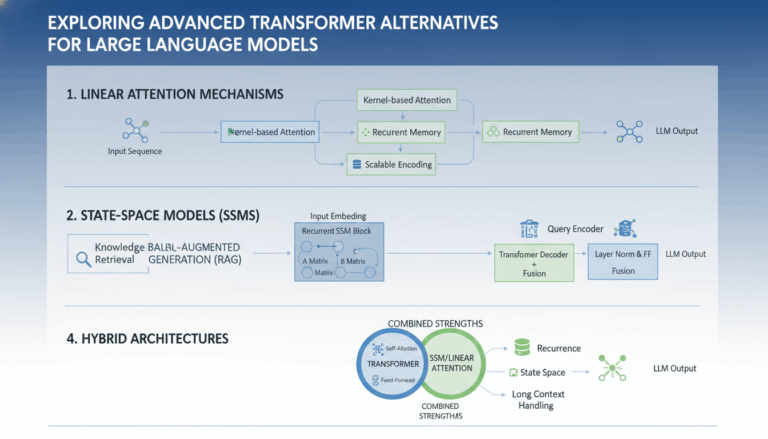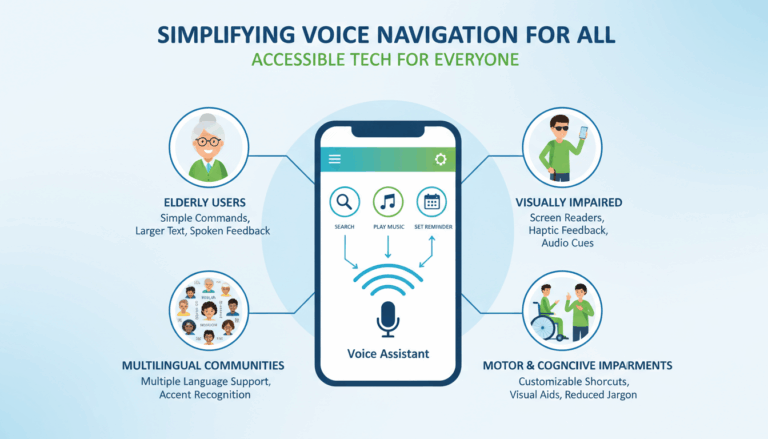Introduction to Movie Recommendation Systems
In the world of digital content, movie recommendation systems have transformed how consumers discover new films and TV shows. These systems have evolved into a fundamental component of streaming services like Netflix, Amazon Prime, and Hulu, using complex algorithms to suggest content that aligns with viewers’ preferences. Understanding these systems is essential for anyone interested in deploying or improving recommendation engines.
The primary goal of a movie recommendation system is to enhance user experience by predicting the user’s interest in specific movies. This prediction is accomplished through analyzing patterns in the user’s past viewing habits and comparing them with other users. Such systems are built on sophisticated data models that can process large streams of data to identify these preferences and trends.
Recommendation systems can be categorized into several approaches, with collaborative filtering being one of the most prevalent methods. Collaborative filtering capitalizes on the idea that people who agreed in the past will agree in the future. It essentially leverages the taste of similar users to make suggestions.
Collaborative Filtering:
Collaborative filtering can itself be divided into two main types: user-based and item-based.
-
User-Based Collaborative Filtering: This involves making movie recommendations by finding users similar to the target user. It identifies the neighborhood of users with similar preferences and then suggests movies that these users have liked. For instance, if a user watches and likes several superhero movies, the system finds other users who also enjoy superhero films and suggests other popular choices among these peers.
-
Item-Based Collaborative Filtering: Instead of finding similar users, this model finds items that are similar to those the user has already rated or liked. For instance, if a user has liked “The Dark Knight,” item-based filtering would suggest movies like “Batman Begins” or “Inception” by cross-referencing users’ interactions and preferences.
The power of collaborative filtering lies in its flexibility and adaptability. However, it does have limitations, such as the “cold start” problem, where the system struggles to suggest accurate movies for new users with insufficient data. Addressing such issues often requires hybrid approaches, which combine collaborative filtering with other methods like content-based filtering, where the system recommends movies based on metadata like genre, director, or cast.
In summary, movie recommendation systems are complex ecosystems that harness rich user data through collaborative filtering. By continuously learning from user input, they improve over time, delivering more precise and satisfying recommendations. As these systems evolve, the potential for them to transform viewing experiences only grows, adding significant value to the burgeoning field of artificial intelligence and machine learning in entertainment.
Understanding Collaborative Filtering
Collaborative filtering is a cornerstone of recommender systems, flourishing particularly in environments like streaming services where user preferences can drive significant engagement. At its core, it operates by analyzing patterns within a user-item interaction matrix, which records ratings, preferences, or interactions between users and the items—in this context, movies.
The principal mechanism is the prediction of a user’s preference for an item by leveraging the preferences of other users who have historically shown similar patterns. This approach capitalizes on the concept that users who have agreed in their preferences in the past will likely continue to do so in the future.
To delve more deeply into how collaborative filtering is implemented, consider a simple example of two main methodologies: user-based and item-based collaborative filtering.
In user-based collaborative filtering, the focus is on the end-users themselves. This approach involves computing the similarity between users based on their movie ratings. For instance, if Users A and B consistently rate similar movies in a similar manner, they are considered similar. Therefore, if User A rates a new movie highly, the system can suggest it to User B. This approach can be powered by algorithms such as Pearson correlation coefficient or cosine similarity, which crunch numbers to establish such likenesses between users efficiently.
Item-based collaborative filtering, on the other hand, shifts the focus from users to items. The primary goal here is to find the relationship between different items based on the collective user interactions with these items. Suppose that many users who like “The Matrix” also give high ratings to “Blade Runner.” Item-based collaborative filtering would then suggest “Blade Runner” to a user who enjoyed “The Matrix,” implying an intrinsic similarity between these films. The methodology might utilize item-to-item similarity metrics and employ algorithms like k-nearest neighbors (k-NN) to facilitate these recommendations.
The ability of collaborative filtering to work without requiring an understanding of the item’s inherent characteristics (such as genre or director) enables a more organic approach to recommendations, solely relying on user-based data. This adaptability allows it to work across diverse content without the need for extensive metadata tagging.
Despite its strengths, collaborative filtering faces notable challenges. A prominent issue is the “cold start” problem, which is particularly challenging for new users with scant interactions or for new movies that lack historical data. Addressing the cold start problem often requires building robust hybrid models that combine collaborative elements with content-based filtering or demographic information.
Moreover, scalability is a concern as datasets grow, given the computational resources needed to calculate user or item similarity with vast numbers of interactions. Techniques such as matrix factorization and singular value decomposition (SVD) have been effective in tackling these challenges by reducing dimensions and enabling more efficient processing.
In practical terms, collaborative filtering can be implemented through popular machine learning libraries and frameworks. For Python developers, libraries like Surprise, which offers various algorithms out of the box, or custom implementations using TensorFlow or PyTorch can enable the creation of robust collaborative filtering-based recommendation systems.
Understanding these concepts is pivotal for developers and data scientists aiming to enhance user experience through personalized recommendations, ultimately driving engagement and retention on platforms like Netflix. As we continue to explore and refine these models, collaborative filtering remains a dynamic and vital area of research and development within AI-driven recommendation systems.
Data Collection and Preparation
Collecting and preparing data is a foundational step in building a Netflix-style movie recommendation system using collaborative filtering. The effectiveness of such a system heavily relies on the quality and comprehensiveness of the dataset, as it forms the basis for identifying patterns and generating recommendations.
To begin, it’s crucial to source high-quality data that includes user interactions, such as movie ratings, watch history, or liked movies. Popular resources like the MovieLens dataset, maintained by the GroupLens research group, offer freely accessible real-world interaction data which is invaluable for constructing recommendation systems. Such datasets typically include millions of ratings for thousands of movies, contributed by a substantial number of users.
When preparing the data, consider the following crucial steps:
-
Data Cleaning:
– Handling Missing Values: Real-world datasets often have inconsistencies, missing values, or errors that need addressing. Impute missing ratings with techniques such as filling with the mean rating of the item or user. Alternatively, leveraging machine learning models to predict these missing values could improve data quality.
– Dealing with Duplicates and Noise: Eliminate any duplicate entries and irrelevant data to prevent bias. For example, redundant ratings or erroneous entries should be cleaned from the dataset. -
Data Transformation:
– Normalization: Normalize rating scales to ensure uniformity, which helps in computing similarities more effectively. For instance, if one dataset uses ratings from 1 to 5 and another from 1 to 10, converting all ratings to a standard scale is necessary.
– Feature Engineering: Create new features that might enhance model performance. For instance, incorporating temporal aspects like the timestamp of when a movie was rated or the user’s viewing frequency can add predictive power by identifying trends or seasonal patterns in user preferences. -
Dataset Splitting:
– Training, Validation, and Testing Sets: Split the dataset into training, validation, and testing subsets to enable structured model development and evaluation. A common approach is using an 80-10-10 split, where 80% of the data is used for training, and the remaining is divided equally for validation and testing. This helps in assessing the model’s ability to generalize to new data. -
User and Item Representation:
– Matrix Formation: Construct a user-item interaction matrix where rows represent users and columns represent movies. Each cell contains the rating a user has given to a movie. This matrix will be instrumental in performing collaborative filtering operations.
– Dimensionality Reduction: Utilize techniques like Singular Value Decomposition (SVD) or Principal Component Analysis (PCA) for dimensionality reduction. This step decreases the computational load and mitigates sparsity in the dataset while preserving essential patterns within the data.
Preparing the data meticulously lays a strong foundation for modeling. Accurate preprocessing ensures that the collaborative filtering algorithms can effectively discern patterns and generate meaningful recommendations. Given the challenges associated with large volumes of data, embracing efficient data management strategies is paramount in streamlining the development and scalability of the recommendation system.
Implementing Collaborative Filtering Algorithms
To build a movie recommendation system like Netflix using collaborative filtering, understanding and implementing both user-based and item-based algorithms is critical. Here’s how you can practically approach this implementation:
User-Based Collaborative Filtering
In a user-based approach, the similarity between a target user and other users is computed to recommend movies based on the preferences of users who are similar. This method tends to work well when there are ample users with overlapping movie preferences.
-
Compute User Similarity:
– Algorithm Choice: Use similarity metrics like Pearson Correlation Coefficient or Cosine Similarity to measure how similar two users are based on their historical ratings.
– Implementation Example:
“`python
from sklearn.metrics.pairwise import cosine_similarity# User ratings matrix
user_ratings = [[5, 4, 0, 0], [5, 0, 4, 3], [0, 3, 4, 0]]# Calculate cosine similarity between users
user_similarity = cosine_similarity(user_ratings)
print(user_similarity)
“` -
Predict Movie Ratings:
– Weighted Average Calculation: For a target movie, calculate the weighted average of the ratings given by similar users, weighted by the similarity scores.
– Example Code:
“`python
import numpy as npdef predict_ratings(user_index, user_similarity, user_ratings):
# Example function to predict ratings for all movies for a single user
weighted_sum = np.dot(user_similarity[user_index], user_ratings)
sum_of_weights = np.sum(user_similarity[user_index])
predicted_ratings = weighted_sum / sum_of_weights
return predicted_ratingspredictions = predict_ratings(0, user_similarity, user_ratings)
print(predictions)
“`
Item-Based Collaborative Filtering
In contrast, item-based collaborative filtering identifies similarities between different movies to predict what the user might like, based on their past preferences.
-
Compute Item Similarity:
– Similarity Metrics: Like the user-based method, similar metrics (Pearson Correlation or Cosine Similarity) can be utilized to compute how similar two movies are based on user ratings.
– Example Implementation:
“`python
# Transpose the user-item matrix to item-user matrix
item_ratings = np.transpose(user_ratings)# Calculate cosine similarity between items
item_similarity = cosine_similarity(item_ratings)
print(item_similarity)
“` -
Generate Movie Recommendations:
– Weighted Average Prediction: Predict the rating a user might give a movie by calculating a weighted average of the movie ratings given by the user for similar movies.
– Example Code:
“`python
def predict_movie_rating(user_ratings, item_similarity, user_index):
weighted_sum = np.dot(item_similarity, user_ratings[user_index])
sum_of_weights = np.sum(item_similarity, axis=1)
predicted_ratings = weighted_sum / sum_of_weights
return predicted_ratingsitem_predictions = predict_movie_rating(user_ratings, item_similarity, 0)
print(item_predictions)
“`
Addressing Scalability and Performance
As the dataset grows, algorithms must be optimized to maintain performance.
- Dimensionality Reduction: Techniques like Singular Value Decomposition (SVD) decrease the size of the user-item matrix, making similarity calculations faster.
“`python
from scipy.sparse.linalg import svds
# Perform SVD
U, sigma, Vt = svds(user_ratings, k=2)
““
- Batch Processing: Compute similarities in batches, or employ parallel computing libraries to distribute the computation across multiple processors.
These steps encapsulate the fundamental techniques required to implement collaborative filtering algorithms, crafting a robust recommendation system that continually learns and improves from user interactions. Such skills are essential for developers and data scientists aiming to enhance engagement on platforms with personalized content delivery.
Evaluating and Improving Model Performance
Evaluating and improving the performance of a movie recommendation system is crucial to ensure it delivers accurate, personalized suggestions to users. The effectiveness of collaborative filtering models can be assessed through various metrics and enhanced through optimization techniques.
First and foremost, evaluating model performance relies on selecting suitable metrics to measure prediction accuracy. Root Mean Square Error (RMSE) and Mean Absolute Error (MAE) are commonly used to gauge how well the predicted ratings match the actual user ratings. These metrics offer insight into the average error magnitude and help track improvements over time.
To compute RMSE, follow these steps:
- Calculate the squared differences between predicted and actual ratings for each movie.
- Average these squared differences across all ratings.
- Take the square root of this average.
Example RMSE calculation in Python:
import numpy as np
def compute_rmse(predictions, actuals):
squared_errors = (predictions - actuals) ** 2
mean_squared_error = np.mean(squared_errors)
rmse = np.sqrt(mean_squared_error)
return rmse
# Example usage:
predicted_ratings = np.array([4, 3, 5, 3.5])
actual_ratings = np.array([5, 3, 4, 4])
rmse_value = compute_rmse(predicted_ratings, actual_ratings)
print(f"RMSE: {rmse_value}")
After evaluating existing performance, explore opportunities to enhance the model:
-
Parameter Tuning: Fine-tuning model parameters is critical for achieving optimal performance. Algorithms such as Grid Search and Random Search can automate finding the best hyperparameters that influence computational efficiency and predictive accuracy.
-
Regularization: Combat overfitting by incorporating regularization techniques such as L2 regularization. This process adds a penalty to large coefficients in the model and helps in achieving better generalization on unseen data.
-
Hybrid Approaches: Blend collaborative filtering with content-based methods to overcome challenges like the cold-start problem. By combining user profile data with user interactions, the model can better cater to new users or movies.
Example of enhancing a collaborative filter with regularization in Python using matrix factorization:
from surprise import Dataset, Reader, SVD, KNNBasic
from surprise.model_selection import cross_validate
# Load data and initialize SVD algorithm with regularization
data = Dataset.load_builtin('ml-100k')
algo = SVD(reg_all=0.02)
# Evaluate model performance
results = cross_validate(algo, data, measures=['RMSE', 'MAE'], cv=5, verbose=True)
-
Scalability Optimization: Integrate techniques for managing increasing data demands. Matrix factorization techniques, like Singular Value Decomposition (SVD), can handle large datasets by simplifying the user-item matrix into lower-dimensional factors.
-
Feedback Integration: Continuously gather user feedback to refine recommendations. Real-world user interactions provide valuable insights that can inform periodic updates to the model.
By meticulously evaluating performance and implementing these strategic improvements, a movie recommendation system can achieve higher accuracy and relevance, leading to enhanced user satisfaction and continued engagement.



